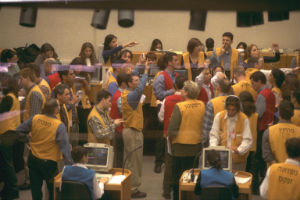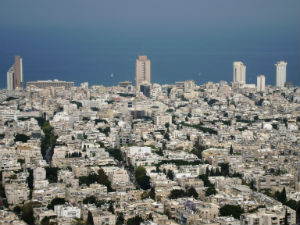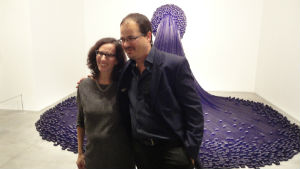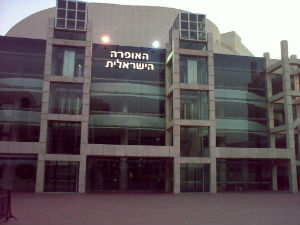 The Tel Aviv Stock Market Exchange (TASE) is the only public market in Israel where people can trade stocks. You will find many products here including stocks, bonds, mutual funds and more. This is a highly regulated by the Securities Law of 1968 and monitored by the Israel Securities Authority. There are a few things you should know about TASE.
The Tel Aviv Stock Market Exchange (TASE) is the only public market in Israel where people can trade stocks. You will find many products here including stocks, bonds, mutual funds and more. This is a highly regulated by the Securities Law of 1968 and monitored by the Israel Securities Authority. There are a few things you should know about TASE.
History Of The Stock Exchange Market
While it was founded in 1953 though the foundations go all the way back to 1935 with the Exchange Bureau for Securities. In 1999 the exchange switched to a completely computerized system. Then in 2006 TASE bought all remaining shares of TASE stock from holders making it a fully owned subsidiary. Even though TASE may have had modest beginnings, today there are 600 companies on the exchange. Of these companies 60 of them represent stock exchanges from other countries.
How is it Doing Now?
As with any market it will fluctuate. There will be some days where it will be down and other days where it will soar. This is why it is important to look at the market over a longer period of time. On the website you can see the graphs over the last three months as well as the year. The market is not at the highest point it has been over the last three months, but it is close. Also, it is significantly higher than it was a year ago. This is a good sign that this market is stable and on the rise, even if it does have the occasional low day.
 Constructed by Jewish-German architects immigrating to the British Mandate of Palestine following the takeover of Germany by the Nazis in the 1930s, the White City is composed of 4000+ buildings and occupies a portion of Tel Aviv. Employing the International, or Bauhaus style, of architecture in creating the buildings, these innovative architects were preceded by the development of the concept for the White City by Patrick Geddes, a Scottish city planner commissioned by the first mayor of Tel Aviv, Meir Dizengoff.
Constructed by Jewish-German architects immigrating to the British Mandate of Palestine following the takeover of Germany by the Nazis in the 1930s, the White City is composed of 4000+ buildings and occupies a portion of Tel Aviv. Employing the International, or Bauhaus style, of architecture in creating the buildings, these innovative architects were preceded by the development of the concept for the White City by Patrick Geddes, a Scottish city planner commissioned by the first mayor of Tel Aviv, Meir Dizengoff. Art is in the eye of the beholder. The beauty of Tel Aviv artist Nelly Agassi’s work is that there is something for everyone. Nelly has been termed a performance artist; a multi-disciplinary artist that works in multiple mediums. Her art transcends time and space. The Jerusalem Center for Visual Arts website describes one of her shows in which she knits a dress around her body. During the performance, Nelly transforms the dress into a large “voluminous object” that she later sheds, as if to invoke the image of shedding an empty skin. Her artwork is edgy, unique and subject to interpretation. She uses various mediums such as knitting, fabrics, photography and much more. Her work can be seen in Tel Aviv, Chicago, New York and London. If you are seeking a unique cultural experience in Tel Aviv, check out the work of Nelly Agassi
Art is in the eye of the beholder. The beauty of Tel Aviv artist Nelly Agassi’s work is that there is something for everyone. Nelly has been termed a performance artist; a multi-disciplinary artist that works in multiple mediums. Her art transcends time and space. The Jerusalem Center for Visual Arts website describes one of her shows in which she knits a dress around her body. During the performance, Nelly transforms the dress into a large “voluminous object” that she later sheds, as if to invoke the image of shedding an empty skin. Her artwork is edgy, unique and subject to interpretation. She uses various mediums such as knitting, fabrics, photography and much more. Her work can be seen in Tel Aviv, Chicago, New York and London. If you are seeking a unique cultural experience in Tel Aviv, check out the work of Nelly Agassi The Tel Aviv Performing Arts Center, which is located in Tel Aviv’s cultural complex, was designed by Israeli architect, Yaakov Rechter, whose father was also an architect. The Tel Aviv Performing Arts Center was first opened to the public in 1994. It is located at Shaul Hamelech Blvd, between Weizmann St and Leonardo da Vinci St.
The Tel Aviv Performing Arts Center, which is located in Tel Aviv’s cultural complex, was designed by Israeli architect, Yaakov Rechter, whose father was also an architect. The Tel Aviv Performing Arts Center was first opened to the public in 1994. It is located at Shaul Hamelech Blvd, between Weizmann St and Leonardo da Vinci St.